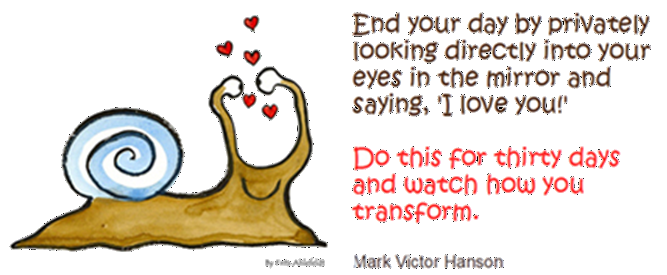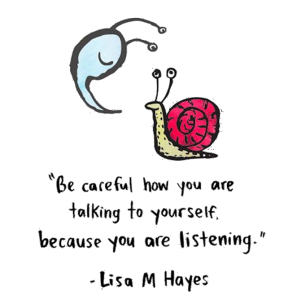 You are a princess, undeniably beautiful, precious, valuable, good enough, acceptable, likeable, cherished, irreplaceable. When you catch a glimpse of your reflection or turn your gaze inward, is this what you hear? Is this the dialogue you have with yourself? I know my thoughts don’t always align with these truths and I am sure I am not alone in this.
You are a princess, undeniably beautiful, precious, valuable, good enough, acceptable, likeable, cherished, irreplaceable. When you catch a glimpse of your reflection or turn your gaze inward, is this what you hear? Is this the dialogue you have with yourself? I know my thoughts don’t always align with these truths and I am sure I am not alone in this.
From a young age, I remember thoughts and phrases getting stuck in my head, replaying themselves over and over like a broken record. Particularly in situations that triggered embarrassment, shame, guilt, social awkwardness or discomfort, I would turn to those all-too-familiar critical and harsh words, speaking to myself with great unkindness and self-loathing. They felt like a safe place to retreat to as they were known, and in some twisted way, if I could tear myself to shreds, then nothing anyone else said or did could hurt as much. Although a seemingly effective protective strategy, repeatedly speaking such unkind and cruel things to myself was soul-destroying and wore away at my self-esteem, self-efficacy, and confidence. These thoughts eventually became automatic, persistent, intrusive, and distressing. Similarly, in stressful situations or when strong feelings emerged, disturbing images would flash before my mind.  The urge to act on these increased as I ruminated on them and this then often intensified the unpleasant feelings and incited incidences of self-harm or deleterious behaviour. I bought the lie that the only way to diminish the intensity of these feelings, thoughts and images, was to act on them. Doing so, although affording a measure of temporary relief, created a new set of problems with consequences that were significantly worse than that of sitting with the original discomfort. For example, I used to think that eating triggered shame and anxiety, so to avoid these feelings, it seemed logical to not eat, and whilst it temporarily seemed to alleviate the intensity of that which I was experiencing, the consequences of not eating were far more extensive and pervasive – physically, mentally, emotionally, and relationally.
The urge to act on these increased as I ruminated on them and this then often intensified the unpleasant feelings and incited incidences of self-harm or deleterious behaviour. I bought the lie that the only way to diminish the intensity of these feelings, thoughts and images, was to act on them. Doing so, although affording a measure of temporary relief, created a new set of problems with consequences that were significantly worse than that of sitting with the original discomfort. For example, I used to think that eating triggered shame and anxiety, so to avoid these feelings, it seemed logical to not eat, and whilst it temporarily seemed to alleviate the intensity of that which I was experiencing, the consequences of not eating were far more extensive and pervasive – physically, mentally, emotionally, and relationally.
I have come to learn, that it is not the activating event that triggers the feelings but the underlying beliefs and thoughts; and it is not the feelings that trigger the behaviours, but the decisions that I make regarding the thoughts, images and emotions that surface. What we think about, dwell on, directly impacts how we feel, and without consideration, will generally determine or impact our behaviour. How do we go about beginning to change what or how we think though?
In ‘Renewing my mind’ on the page ‘Tips and Tricks’, I wrote about how our thoughts become like well-worn tracks in the bush. 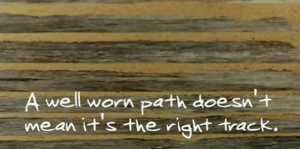 Establishing new synapses and neural pathways in our brain is similar to carving out a new pathway in the bush – it requires taking a new route over and over until it is well-worn. The more I take this new path, the easier it is to take and the more visible it becomes. If I refrain from taking the old path, it eventually grows over. How do I hack my way through a messy jungle or bush and carve this path though? Here are some of the strategies I trialled and tested for dealing with intrusive and distressing thoughts and images (I also created a poster with some of the strategies which can be downloaded by clicking on the headings or images below)…some may be more effective for you than others, but you won’t know til you give it a go. Nothing changes if nothing changes, so why not give it a shot? 😉
Establishing new synapses and neural pathways in our brain is similar to carving out a new pathway in the bush – it requires taking a new route over and over until it is well-worn. The more I take this new path, the easier it is to take and the more visible it becomes. If I refrain from taking the old path, it eventually grows over. How do I hack my way through a messy jungle or bush and carve this path though? Here are some of the strategies I trialled and tested for dealing with intrusive and distressing thoughts and images (I also created a poster with some of the strategies which can be downloaded by clicking on the headings or images below)…some may be more effective for you than others, but you won’t know til you give it a go. Nothing changes if nothing changes, so why not give it a shot? 😉
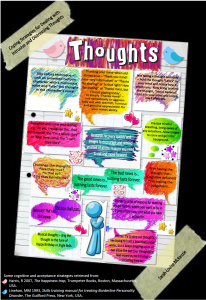 Strategies for Dealing with Intrusive and Distressing Thoughts
Strategies for Dealing with Intrusive and Distressing Thoughts
- Musical thoughts – sing distressing thought to the tune of Happy Birthday or Jingle Bells.
- Not taking a thought seriously – hold the thought “I am x” in your mind and notice how it affects you. Now bring to mind the thought, ‘I am a banana!’ Hold it in your mind and notice how it affects you.
- Identify the eating disordered thoughts and address them – Recognising what is the ‘ED voice’ and the ‘Healthy Sarah’ voice has been pivotal. Initially, I believed all my thoughts to be true and the ED thoughts had become so enmeshed with my own that I could not separate the two. Now when I am having thoughts, I am increasingly able to ‘label’ them and recognise that ‘oh – that’s one of the old familiar ED thoughts…what would my reasonable, wise mind, or healthy Sarah say?’.
- Thanking your mind – when old stories arise – ‘Thank you mind! How very informative!’ or ‘Thanks for sharing!’ or ‘Is that right? How fascinating!’ or ‘Thanks mind, but I’m not playing today’, or simply ‘Thanks mind!’ – not sarcastically or aggressively but with warmth, humour, and genuine appreciation for your minds ability.
- Silly voices technique – pick an animated cartoon character with a humorous voice and ‘hear’ the thought in the character’s voice.
- Think about something beautiful or positive – Philippians 4:8-9 says, “I’d say you’ll do best by filling your minds and meditating on things true, noble, reputable, authentic, compelling, gracious—the best, not the worst; the beautiful, not the ugly; things to praise, not things to curse….then the God of peace, of untroubled, undisturbed well-being, will be with you”.
- Remind yourself that: ‘This too shall pass’; ‘The bad news is…nothing lasts forever. The good news is….nothing lasts forever’; ‘Feels scary? That’s ok. Do it anyway’.
- Challenge the thoughts – Are they true? Is that so? Do they benefit me?
- Take ten deep breaths, as slowly as possible. Now focus on the rise and fall of your rib cage, and the air moving in and out of your lungs. Notice the sensations as the air flows in: your chest rising, your shoulders lifting, your lungs expanding. Notice what you feel as the air flows out: your chest falling, your shoulders dropping, the breath leaving your nostrils. Now let any thoughts and images come and go in the background, as if they were cars passing by outside your house.
- ‘I’m having the thought that…’
- ‘I’m making the judgement…’
- Recognise and name your stories, e.g. ‘Ah yes, I recognise this…that old favourite, the “I’m a failure story”’ or ‘Aha! Here comes the “I can’t cope story”’.
- Compose a list of reasons for wanting to get better; where you want to be in 2 years from now; and what you have to live for.
- Research recovery quotes and images or check out the Inspo Box to encourage and remind yourself of all the reasons you need to eat and move forward.
- Trying to stop our thoughts is like trying to hold a beach ball under water, it keeps popping up in front of our face. Perhaps more effective, is to allow the ball (our thoughts) to float around us, not intruding, just letting them be.
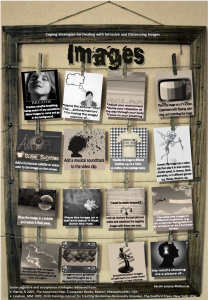 Strategies for Dealing with Intrusive and Distressing Images
Strategies for Dealing with Intrusive and Distressing Images
- In your mind, place the image on a TV screen. Experiment with flipping, spinning, and stretching the image.
- Add a humorous subtitle or voiceover to the image on the screen.
- Convert the image into a video clip then play it in slow motion, double speed, in reverse, black-and-white, or in different genres – e.g. Disney, Western, etc.
- Add a musical soundtrack to the video clip.
- Place the image in a bubble and watch it float away.
- Place the image on a leaf and watch it float down the river.
- Imagine the images as clouds floating by and eventually passing out of sight.
- Imagine your greatest fear/thought as a decorated party banner.
- Substitute/alter images of self-harm to make them comical or less intense.
- Visualise the images in different locations, e.g. on a banner flying behind an airplane, as a bumper sticker, on a t-shirt, as a tattoo, or as a postage stamp.
- Breathe – practice mindful breathing, being aware of any sensations. Allow images to come and go in the background.
- Name the picture – ‘Aha! The …. picture/memory’.
- ‘I’m having the image/memory of…’
- Relax – adjust your environment, guide your relaxation all the way through your body, focus on your breathing.
- Look up recovery focused pictures online and substitute the negative images with these new ones.
- ‘My mind’s showing me a picture of…’
Some of the cognitive and acceptance strategies above are retrieved from:
◊ Harris, R 2007, The happiness trap, Trumpeter Books, Boston, Massachusetts, USA.
◊ Linehan, MM 1993, Skills training manual for treating Borderline Personality Disorder, The Guilford Press, New York, USA.
